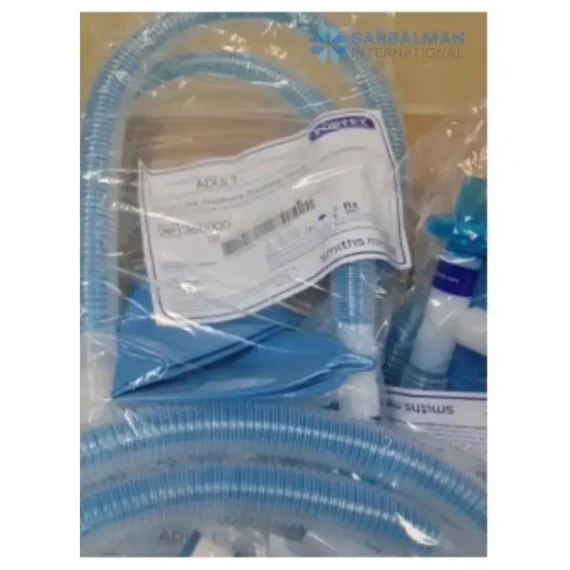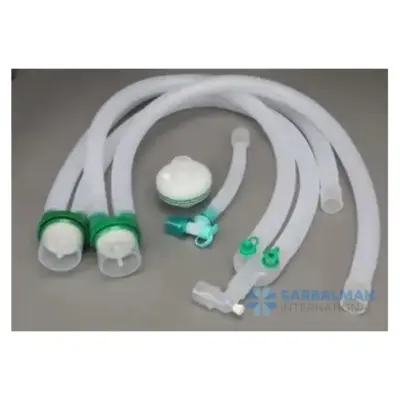Anesthesia Breathing Circuit
Free!
An anesthesia breathing circuit connects the patient to the anesthesia machine for safe gas delivery and ventilation. Options include circle (rebreathing) systems with CO₂ absorption for efficient low-flow anesthesia, and non-rebreathing circuits for low resistance and rapid adjustments. Standard 15/22 mm connectors ensure broad compatibility with masks, airways, and filters, supporting reliable use in the OR, ICU, transport, and training settings.
Description
An anesthesia breathing circuit is the tubing and connectors that link a patient to an anesthesia machine for controlled ventilation and delivery of medical gases and anesthetic agents. A typical set includes corrugated inspiratory and expiratory limbs, a Y-piece to the patient, standardized 15/22 mm connectors, and a reservoir bag. Circle (rebreathing) systems add one-way valves and a carbon dioxide absorber to prevent CO₂ rebreathing, while non-rebreathing and Mapleson-type circuits prioritize low resistance and rapid gas changes.
Key features and benefits
• Circle (rebreathing) option: CO₂ absorption and unidirectional valves support efficient low-flow anesthesia, stable concentrations, and conservation of heat and humidity.
• Non-rebreathing/Mapleson options: simple setup, very low resistance, and quick adjustments—useful for short procedures and patients who benefit from minimal work of breathing.
• Standard connectivity: 15/22 mm conical fittings ensure compatibility with masks, airways, filters, and anesthesia machines.
• Configurable components: reservoir bag and adjustable pressure-limiting valve support both manual and mechanical ventilation.
Typical applications
• General anesthesia in the operating room
• Procedural sedation with assisted ventilation
• Transport and short-term ventilation using anesthesia machines
• Simulation and training in airway management
How it compares
Circle circuits enable lower fresh-gas flows and better conservation of heat and humidity; non-rebreathing circuits offer simplicity and minimal resistance with faster anesthetic concentration changes. The right choice depends on case length, patient physiology, and clinician preference.
Standards and quality notes
Breathing sets and tubes follow widely adopted international specifications for dimensions and connectors, helping ensure safe fit and interoperability across operating rooms and ICUs.






